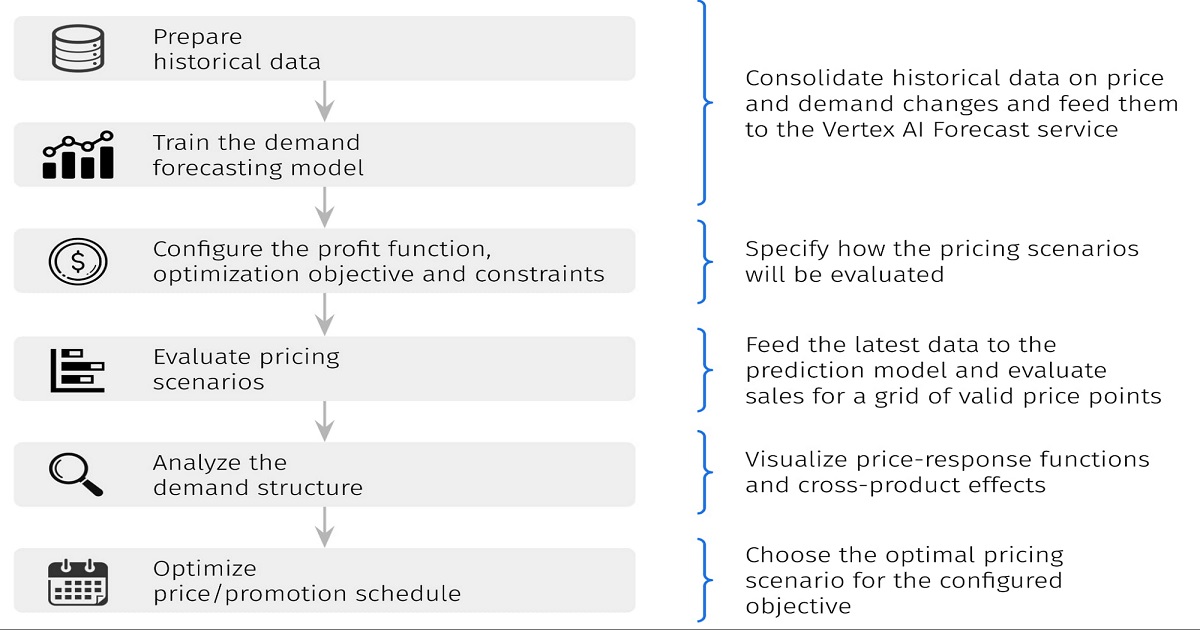1. Introduction to Google Vertex AI Pricing
Google Vertex AI is Google Cloud’s managed machine learning service that enables developers to accelerate the deployment and maintenance of AI models. One crucial aspect of adopting any AI solution is understanding its pricing structure. In this article, we delve into the intricacies of Google Vertex AI pricing to provide clarity and insights for businesses and developers.
2. Components of Google Vertex AI Pricing
Google Vertex AI pricing comprises various components, each tailored to specific usage scenarios. These components include base model training, online prediction, batch prediction, and resource utilization costs. Understanding these components is essential for estimating and managing expenses effectively.
3. Factors Influencing Google Vertex AI Pricing
Several factors influence Google Vertex AI pricing, such as the complexity of the model, the size of the dataset, compute resources utilized, and the frequency of usage. Businesses need to assess these factors to forecast and optimize their AI expenses accurately.
4. Pricing Models Offered by Google Vertex AI
Google offers flexible pricing models for Vertex AI, including pay-as-you-go, monthly subscriptions, and custom pricing for enterprise solutions. Each model caters to different business needs and usage patterns, providing scalability and cost-effectiveness.
5. Understanding Base Model Training Costs
Base model training costs are determined by factors such as the duration of training, the type of resources utilized (CPU/GPU/TPU), and any applicable discounts or credits. Google Vertex AI offers transparent pricing for base model training, enabling businesses to budget effectively.
6. Exploring Online Prediction Pricing
Online prediction pricing is based on factors such as real-time inference costs, model deployment charges, and considerations for traffic and latency. Businesses need to assess their online prediction requirements to optimize costs and ensure efficient AI deployment.
7. Calculating Batch Prediction Expenses
Batch prediction expenses depend on the pricing structure for batch prediction, data transfer costs, and considerations for scheduling and frequency. Understanding these factors is crucial for businesses conducting batch predictions at scale.
8. Managing Resource Utilization Costs
Resource utilization costs include expenses related to storage, network usage, monitoring, and logging. Optimizing resource utilization through efficient management practices can lead to significant cost savings for businesses leveraging Google Vertex AI.
9. Tips for Cost Optimization with Google Vertex AI
To optimize costs with Google Vertex AI, businesses can adopt various strategies, including efficient resource allocation, leveraging pre-trained models, and monitoring and adjusting usage based on demand.
10. Comparing Google Vertex AI Pricing with Competitors
Comparing Google Vertex AI pricing with competitors such as AWS SageMaker, Microsoft Azure Machine Learning, and IBM Watson Studio provides valuable insights for businesses evaluating AI solutions. Understanding pricing differences and features can aid in informed decision-making.
11. Case Studies: Cost Analysis with Google Vertex AI
Case studies showcasing cost analysis with Google Vertex AI across different industries provide real-world examples of cost savings strategies and ROI. These case studies highlight the value proposition of Google Vertex AI for businesses.
12. Addressing Common Concerns about Google Vertex AI Pricing
Transparency in pricing, cost predictability, and support and assistance are common concerns businesses may have regarding Google Vertex AI pricing. Addressing these concerns helps build trust and confidence in the platform.
13. Conclusion
In conclusion, Google Vertex AI offers a comprehensive and transparent pricing structure tailored to the needs of businesses and developers. By understanding the components, factors, and pricing models associated with Google Vertex AI, businesses can effectively manage costs and unlock the full potential of AI-driven innovation.



